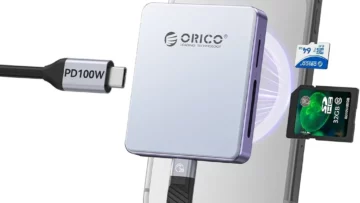Fix Echo in OBS: How to Stop Hearing Your Own Voice

Index
When streaming with OBS, you may encounter audio issues, such as hearing your own voice through the microphone or experiencing echo or double sound. Knowing the causes of these problems can help you address them without panic, improving the quality of your streams.
This article introduces solutions for when you hear your voice or hear two voices during OBS streaming, covering what needs to be checked both within and outside OBS.
It also explains external plugins that can be used for troubleshooting and other audio issue solutions.
Causes of Hearing Your Own Voice or Echoing in OBS
The main causes of hearing game sound or your own voice, or hearing doubled sound or voice during OBS streaming are usually due to the following two reasons:
- Audio from the same device is outputting from multiple places
- Audio monitoring is enabled, leading to hearing your own voice (echo)
Solutions for hearing your voice or echoing can be broadly divided into the following three categories:
- Capturing the audio of the same device in one way
- Avoid looping the audio from the same device
- Wearing headphones
To prevent hearing your voice or game sound during OBS streaming, it’s crucial to correctly configure settings in both OBS and other equipment or software.
The following chapters will provide a detailed explanation of solutions for troubleshooting, taking into account the elements and concepts of OBS audio.
Basic Elements and Concepts of OBS Audio
Before understanding how to address audio issues in OBS, it’s important to familiarize yourself with the elements and concepts of OBS audio. Knowing what sound is playing where and how it’s captured into OBS can lead to effective troubleshooting.
OBS audio is primarily composed of the following three components:
| OBS Audio Types | Audio Features |
|---|---|
| Microphone Audio (Starting point of sound acquisition) | ・Refers to an external USB microphone or mixer ・Set up in “Settings” → “Audio” and configure under “Global Audio Devices” as Microphone Audio |
| Desktop Audio | ・Audio playing on the PC ・Refers to audio from video platforms like YouTube, PC games, media players, etc. |
| Source Audio | ・Audio from OBS sources like “Media Source,” “Video Capture Device,” “Audio Input Capture,” or “Audio Output Capture” ・Applies only to specific scenes |
Understanding the types and features of audio is essential to knowing how sound enters the microphone and listening to audio from OBS.
Solutions for When You Can Hear Your Voice in OBS
Below are six solutions for resolving the issue of hearing your voice or echoing sound in OBS. Try the following methods one by one to ensure your voice is not picked up during OBS streaming.
- Adjust the microphone position
- Limit to one microphone audio
- Delete and re-add audio sources
- Change audio monitoring settings
- Alter video capture device settings
- Solutions when using a capture card
Adjust the Microphone Position
Before adjusting OBS settings, the first step should be adjusting the microphone position. This is because the position of the external microphone may play a role in the issue of hearing your own voice or echoing sound during OBS streaming.
To avoid the microphone picking up sound from the speakers, which can cause echoing, ensure you position the microphone so it doesn’t pick up speaker audio.
If adjusting the microphone position doesn’t solve the problem, proceed to the next step.
Limit to One Microphone Audio
If changing the microphone position doesn’t resolve the audio issue, then it’s necessary to modify the OBS microphone settings to capture sound from only one microphone. Follow the steps below to adjust the microphone settings:
1. Click “Settings” on the bottom right of OBS
2. Go to “Audio” once the “Settings” window opens
3. Under “Global Audio Devices” in the “Audio” tab, set any microphones other than “Microphone Audio,” (like “Microphone Audio 2” to “Microphone Audio 4”) to “Disabled”
If the situation doesn’t change after adjusting the “Microphone Audio” settings, try other solutions.
Delete and Re-Add Audio Sources
If the above two methods don’t solve the issue, it’s recommended to delete the following audio sources configured in OBS. After deleting the audio sources, re-add them and set the “Microphone Audio.”
- Browser
- Media Source
- Audio Input Capture
- Audio Output Capture
- Application Audio Capture
Here are the methods to re-add the removed items:
| Audio Source | Method to Re-Add |
|---|---|
| Browser | ・Mute video audio played on the browser |
| Media Source | ・Click the gear icon under “Media Source” and set “Audio Monitoring” to “Monitor Off” |
| Audio Input Capture | ・Go to “Settings” → “Audio” and set “Desktop Audio” to “Disabled” |
| Audio Output Capture | ・Go to “Settings” → “Audio” and set “Microphone Audio” to “Disabled” |
| Application Audio Capture | ・Go to “Settings” → “Audio” and set either “Desktop Audio” or “Microphone Audio” to “Disabled” |
Once the above is completed, proceed to “Audio” in the “Settings” and configure the “Microphone Audio.” The microphone audio settings are the same as in the previous section, “Limit to One Microphone Audio.”
Change Audio Monitoring Settings
Changing the “Audio Monitoring” settings is also an effective solution if you hear your own voice or the sound is echoing.
“Audio Monitoring” is a feature used for microphone testing and to listen to audio files or capture card audio. When changing the settings, follow these steps:
1. Select the gear icon below the “Audio Mixer” and open “Advanced Audio Properties”
2. Set “Audio Monitoring” of “Microphone” to “Monitor Off”
※ If you want to hear your voice (not included in the stream): Monitor Only (mute output)
※ If you want to hear your voice (included in the stream): Monitor and Output
Note that setting “Audio Monitoring” to anything other than “Monitor Off” may cause delayed self-audio, so be cautious.
Alter Video Capture Device Settings
If audio issues occur while inputting camera footage (using Video Capture Device) in OBS, follow the steps below to change the Video Capture Device settings:
1. Double-click on “Video Capture Device” in the OBS Source Panel to open the “Properties” screen
2. Scroll to the bottom and, if “Use Custom Audio Device” is checked, uncheck it
3. In “Settings” of the “Control Panel,” select “Audio”
4. Check in “Global Audio Devices” under “Microphone Audio” that the microphone you want to use is set
Solutions When Using a Capture Card
If using a capture card for OBS streaming, try the above five methods first, particularly focusing on deleting “Audio Input Capture.”
When problems persist, consider the following solutions:
- Set “Audio Monitoring” to either “Monitor Off” or “Monitor Only (mute output)”
- In the Video Capture Device settings screen, configure “Audio Output Mode” to “Capture audio only”
Also, review other articles on using capture cards with OBS as a reference for detailed guidance on game streaming with capture cards.
[OBS] How to Stream Games Using a Capture Card: Complete Step-by-Step Guide
Solving Troubles Through Settings Outside of OBS
If the sound issues such as hearing your own voice or echoing persist, you need to check settings outside OBS. Here are four methods for addressing the problem without altering OBS settings:
- Wear headphones
- Set streaming sites to mute
- Check Windows sound settings
- Make sure other software is not interfering
Wear Headphones
Wear headphones during recording or streaming to prevent your microphone from picking up audio from your computer speakers or TV. Outputting your PC audio through headphones keeps it from being picked up by the microphone.
If circumstances prevent you from using headphones, reducing the speaker volume on your PC is a recommended alternative.
Notably, wearing headphones is also beneficial when streaming with a capture card.
Set Streaming Sites to Mute
Mute the audio on streaming sites when checking your streaming screen during OBS streaming. It prevents microphone audio from looping. To mute the audio, simply click the speaker icon on the streaming site and set it to mute. Ensure that the audio remains muted throughout the streaming session.
Using a comment viewer is recommended for checking comments or chat during a stream.
Check Windows Sound Settings
If you’re using Windows OS, changing the sound settings might resolve the audio issue. Follow the steps below to check the sound settings and turn “Listen to this device” OFF.
1. Right-click the “Speaker” icon on the “Taskbar” at the bottom right of the desktop screen and select “Open Sound Settings”
2. Open the “Sound Control Panel,” the second from the top
3. From the “Recording” tab, right-click and open “Properties” for the connected microphone
4. In the “Listen” tab, if “Listen to this device” is checked, uncheck it
Make Sure Other Software Is Not Interfering
If other software is running simultaneously while streaming with OBS, it may cause audio issues. It’s important to turn off unnecessary settings in other software during streaming.
For example, if Discord’s monitoring is ON, it could interfere with OBS, so it’s recommended to turn it OFF.
Using an audio interface to connect a microphone or instrument to your PC can also cause your voice to be heard during streaming if monitoring is enabled on the equipment.
To prevent audio issues, adjust the microphone position, use headphones or earphones, and set monitoring on equipment to OFF.
Addressing Troubles Using External Plugins
Using external plugins can be a solution for audio issues like hearing your own voice or echoing during OBS streaming. Below are two recommended plugins for dealing with problems of hearing your voice or doubled audio.
| External Plugin | Features |
|---|---|
| win-capture-audio ※ The OBS version 28.0 or above has a similar built-in feature (with slight differences)※ Windows only | ・Allows separating voices of different apps and games using OBS audio mixer ・Enables selecting only the desired audio even with other sounds playing on the desktop ・Can apply individual filters to captured audio, facilitating smooth volume adjustments |
| VideoProc Converter ※ Compatible with Windows, Mac, and iPhone | ・An all-in-one video processing software useful when encountering audio issues or recording failures during game recording with OBS ・Allows specifying the recording range and real-time depiction, with no recording time limits, enabling long recordings ・Less prone to dropped frames or desynced audio ・Low CPU usage ensures smooth operation even while editing videos concurrently ・Supports high-quality recording and high-quality video editing |
Choose an appropriate external plugin according to the OS and OBS version you are using.
Other Audio Troubleshooting in OBS
Resolve other possible audio issues during OBS streaming by addressing the following three audio problems:
- Audio not playing
- Audio pitch changes
- Crackling audio
Refer to the detailed articles provided for each case for further assistance.
Audio Not Playing
The main causes of audio not playing during OBS streaming are usually the following three issues. Identify the root cause of the problem and apply the appropriate solution to solve the audio issue.
| Cause | Solution |
|---|---|
| Improper connection of headphones or speakers | ・Verify the connection status of headphones or speakers and ensure they function correctly ・Also check the condition of headphones cables and connectors |
| Incorrect OBS audio configuration | ・Check if the “Monitoring Device” under the “Audio” tab in “Settings” is set to “Default” |
| Incorrect PC audio settings | ・Verify the output device and volume level in the PC sound settings |
For more detailed solutions, refer to articles exploring scenarios where no sound is produced in OBS.
No Sound in OBS? Clear Solutions for Audio Issues Based on Specific Symptoms
Audio Pitch Changes
When streaming or recording with a capture card in OBS, the audio pitch may change. The following are the three causes and solutions for this issue:
| Cause | Solution |
|---|---|
| Attempting 4K output from a non-4K-compatible capture card | ・Adjust the capture card’s resolution to match the output of the gaming console |
| Different USB formats between capture card and PC | ・Switch the wiring on the capture card and PC to USB 3.0 compatible settings |
| Incorrect settings for OBS, output, or audio bitrate | ・Set OBS settings, output, and audio bitrate to 128kbps |
Read more about using capture cards with OBS for game streaming in the additional articles provided.
[OBS] Complete Guide to Streaming Games with a Capture Card
Crackling Audio
During OBS streaming, you may encounter crackling audio (audio distortion). Here are the main three causes of crackling audio. Try solutions appropriate to each cause:
| Cause | Solution |
|---|---|
| High load on CPU or GPU | ・Upgrade to a more powerful computer ・Adjust OBS encoding settings to reduce CPU and GPU usage ・Prioritize video editing and gaming tasks, adjusting high-load tasks accordingly ・Stop unnecessary background processes |
| Inappropriate OBS settings | ・Lower microphone volume ・Adjust audio using filters |
| Malfunctioning audio driver | ・Uninstall and update the audio interface driver to the latest version |
If you’re experiencing crackling or distorted audio during OBS streams, the article below provides detailed solutions—be sure to check it out.
OBS Game Audio Crackling? 6 Effective Ways to Eliminate Noise
Summary
When experiencing audio issues like hearing your own voice or echoing during game streaming with OBS, it’s crucial to check both OBS and non-OBS settings.
If troubleshooting through OBS and peripheral equipment or software settings does not resolve the issue, utilizing external plugins can be beneficial. When selecting external plugins, carefully consider those suitable for your OS and equipment.
Knowing solutions to other potential audio issues during OBS streaming can provide peace of mind as you venture into streaming. Master OBS features and embrace enjoyable video broadcasting!








